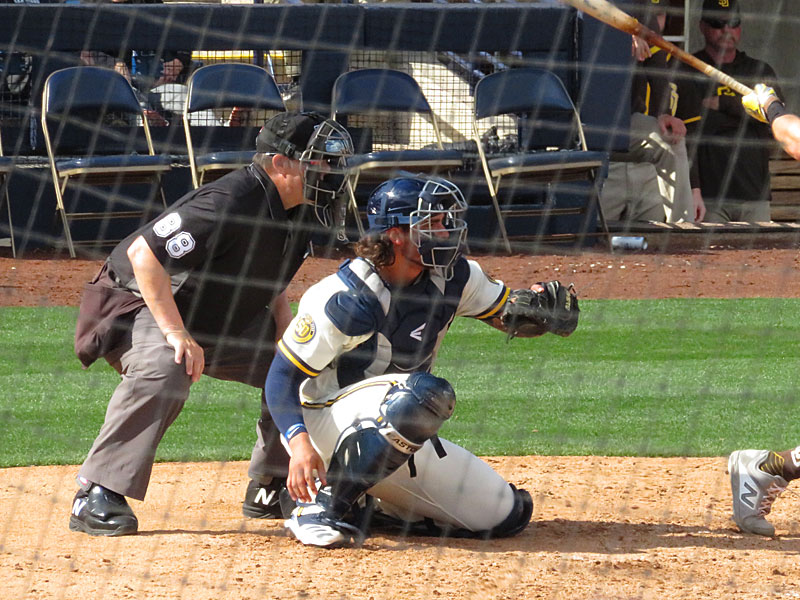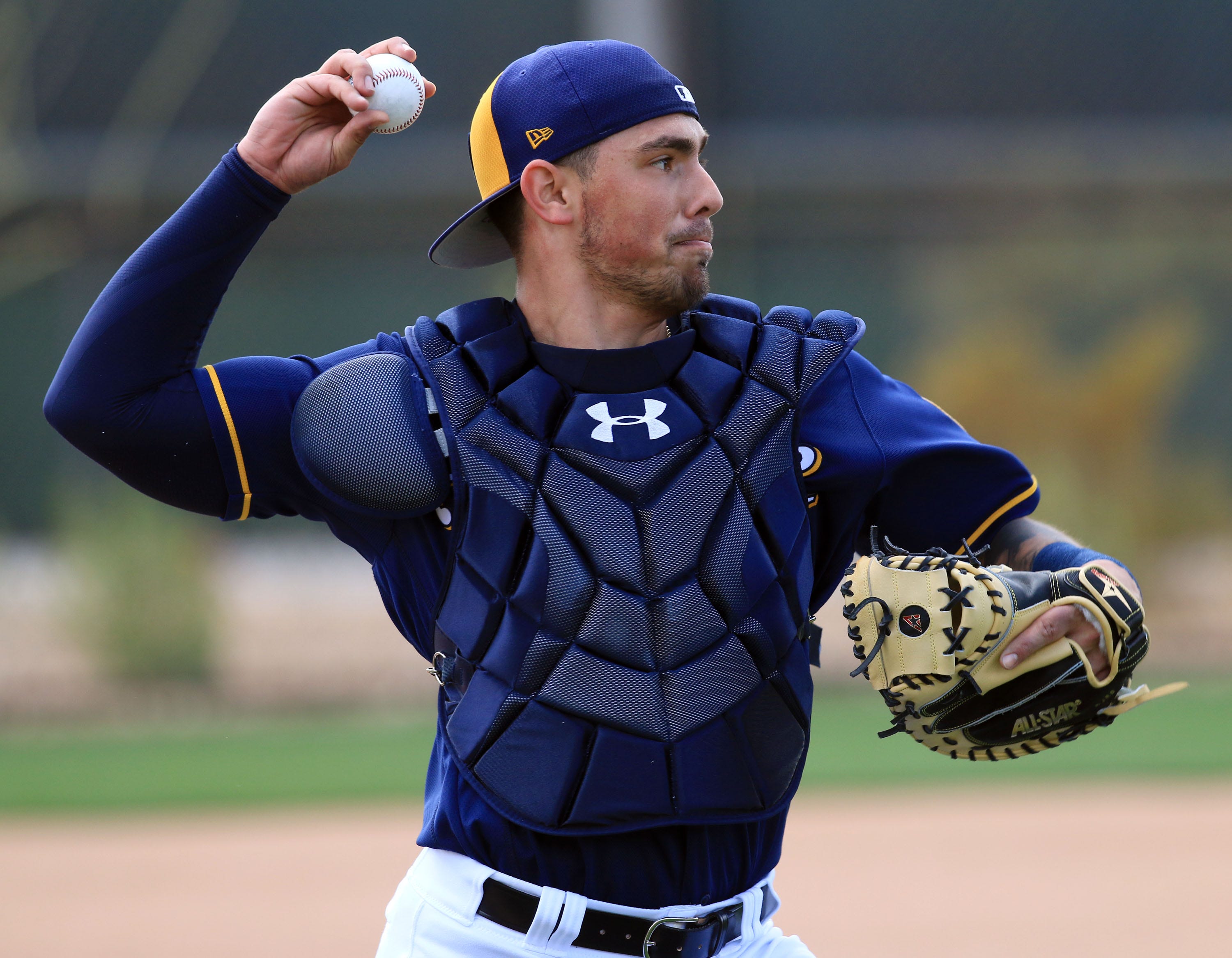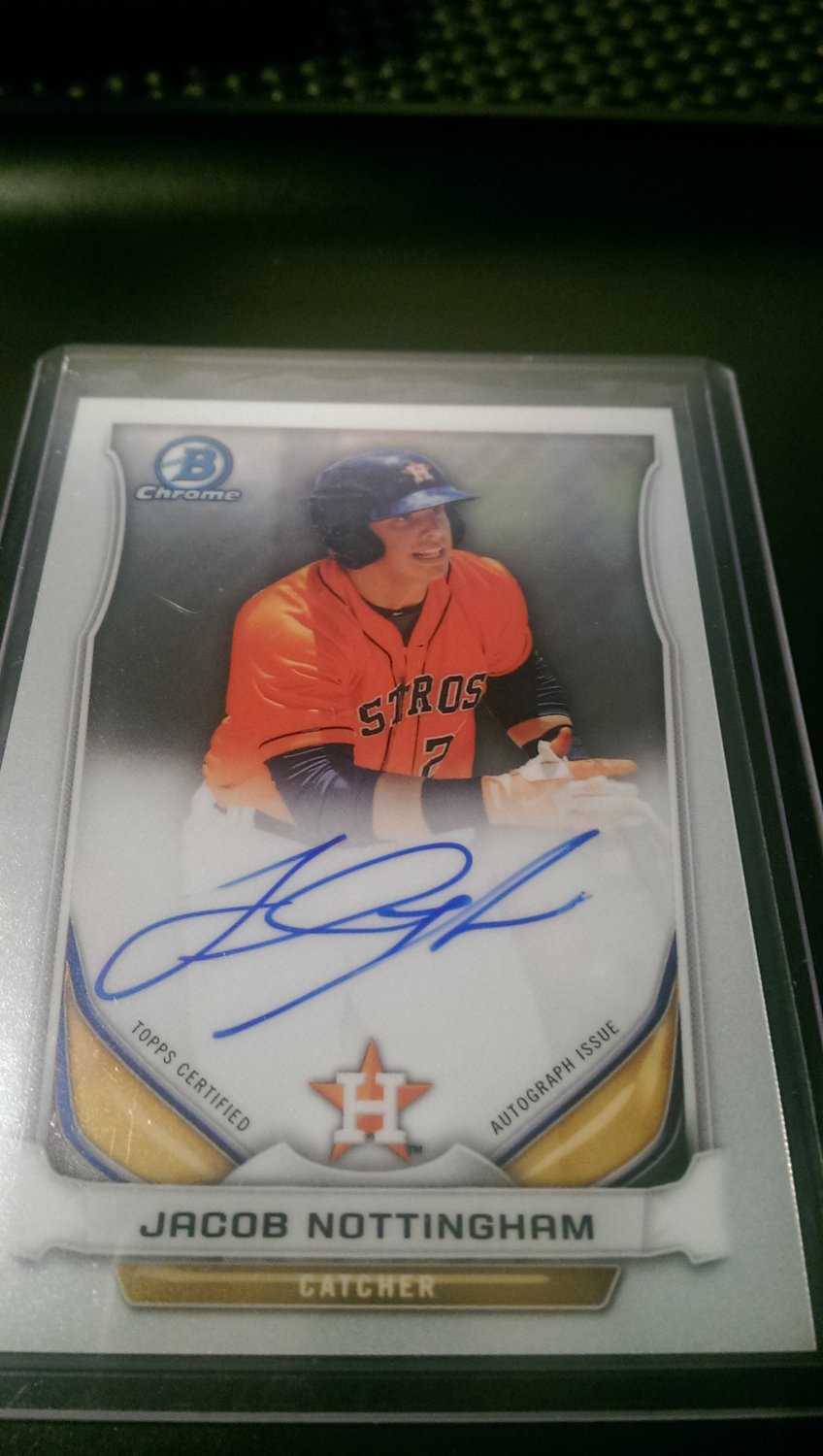
One key factor for Jacob Nottingham entering the 2021 season on the Opening Day roster will be what the Brewers elect to do with Manny Pina. Is all of this enough to lock Jacob Nottingham into a Brewers roster spot for 2021 already? This is fairly consistent if you dive into his minor league stats as well.

Throughout his major league appearances his strikeout rate is 33.8%. One knock on his offensive game throughout his baseball career has been a high strikeout percentage. Of Nottingham’s seven hits, five have went for extra bases with one being a double and four home runs. His 19% barrel percentage so far in 2020 is outstanding and has resulted in a slugging percentage of.

Offensively, Jacob Nottingham is doing damage with his hits and making lots of loud contact. At the Triple-A level in 2018 that percentage did decrease to 28% but with a significantly smaller sample size as well. At Biloxi in 2016 he threw out 42% of base stealers and 66% in 2017. If you take a look at his track record of throwing base runners out in the minor leagues, it is quite impressive. His 29% caught stealing percentage in 2020 may not look all that impressive to the naked eye, but this percentage is based off of throwing out 2 baserunners in just 7 chances. During games, he has shown a super quick pop time and has the necessary tools to be a successful. He also does a tremendous job behind the dish in terms of blocking pitches and has a strong throwing arm.

No matter who is on the mound, you can feel confident that Jacob Nottingham is going to help steal Brewers pitchers a few extra strike calls. Per Baseball Savant, the 25 year old rookie ranks in the 91st percentile in pitch framing. The biggest impact Nottingham has on a daily basis is his defense. Since then, Nottingham has shown the Brewers the many different ways he can impact the game, but is it enough to say he has solidified a spot for 2021? When Manny Pina went down earlier this year with a knee injury, many people had questions regarding what Jacob Nottingham could bring to the table once being promoted. “There is much about comfort in the story,” noted GK Chesterton, and it does feel comforting here, even this far from Christmas.Jacob Nottingham was once the Brewers catcher of the future, but after a few lackluster seasons in the minors, excitement waned. The end brings a clever twist and a great surge in festive feeling, with carol singing and general good cheer. But when the human drama slows down, it gains an emotional catch, such as a romantic pause between Belle (Aoife Gaston) and the young Scrooge, and the final scene between Scrooge and Bob Cratchit (Edward Harrison) we wish for a few more of these. Some key moments feel too fleeting and don’t carry enough emotion, including Tiny Tim’s deathbed scene. Other atmosphere-building exchanges – of an impoverished mother singing to her child, of street crowds – are too many, too short, and feel like pauses to the story.

Paul Wills’s set is made up of towering filing cabinets along with doors and beds, all on wheels, which create an almost constant bustle as they come and go, sometimes for only bite-size scenes. Sometimes these effects come too thick and fast, especially the lighting which changes jaggedly. There is also strong projection work (video design by Nina Dunn and illusion by John Bulleid). Much of the drama lies in the lighting, designed by Philip Gladwell (sometimes piercing, sometimes hazy) and sound by Ella Wahlström (full of jumps and screeches). The ghosts of Christmas past, present and future do not particularly surprise or chill. The Cratchits are sweet if a little generic – a merry, stoic band – but Gatiss’s ghostly Marley is imaginatively portrayed as a creepily sashaying figure. Photograph: Nottingham PlayhouseĬharacters such as Belle and Fezziwig come and go with little sense of individuality. An emotional catch … Aoife Gaston and Nicholas Farrell in A Christmas Carol: A Ghost Story at Nottingham Playhouse.


 0 kommentar(er)
0 kommentar(er)
